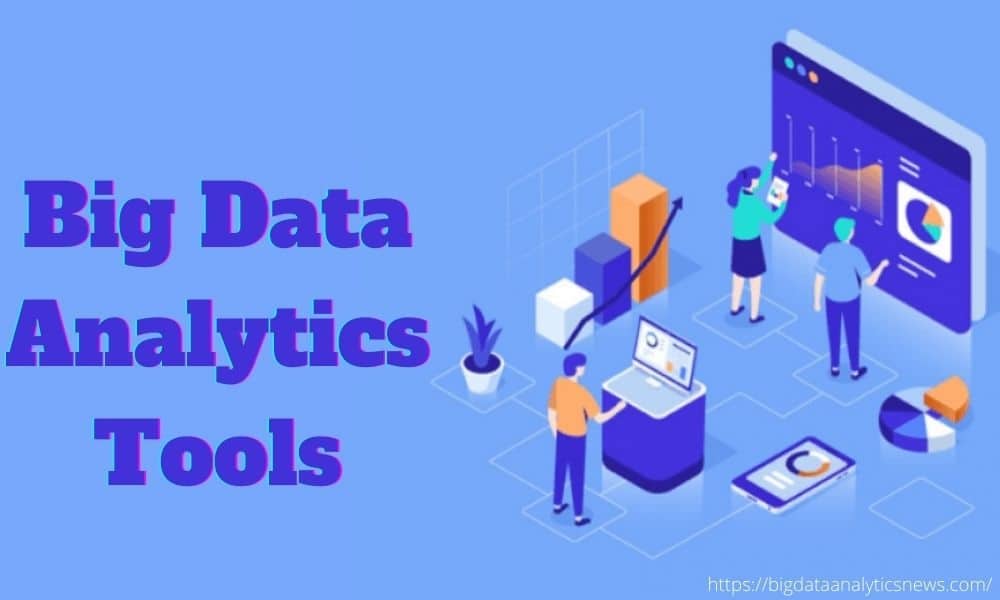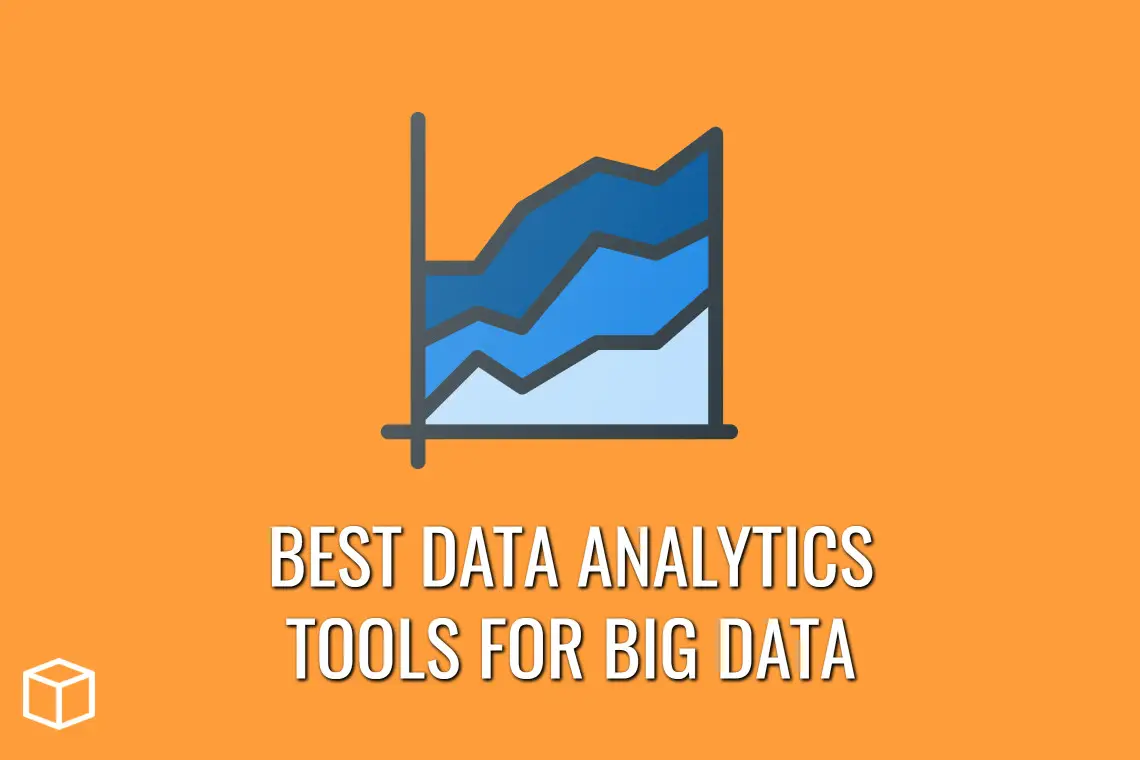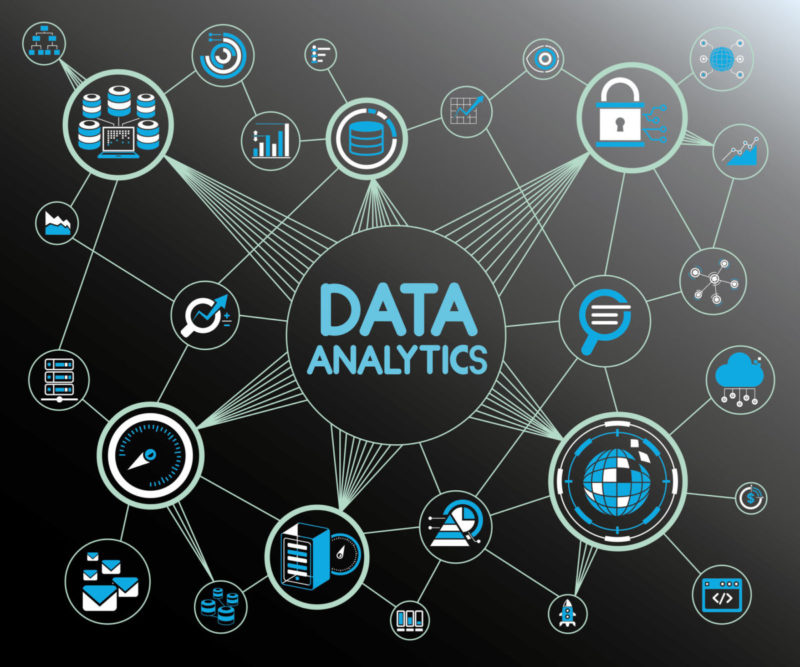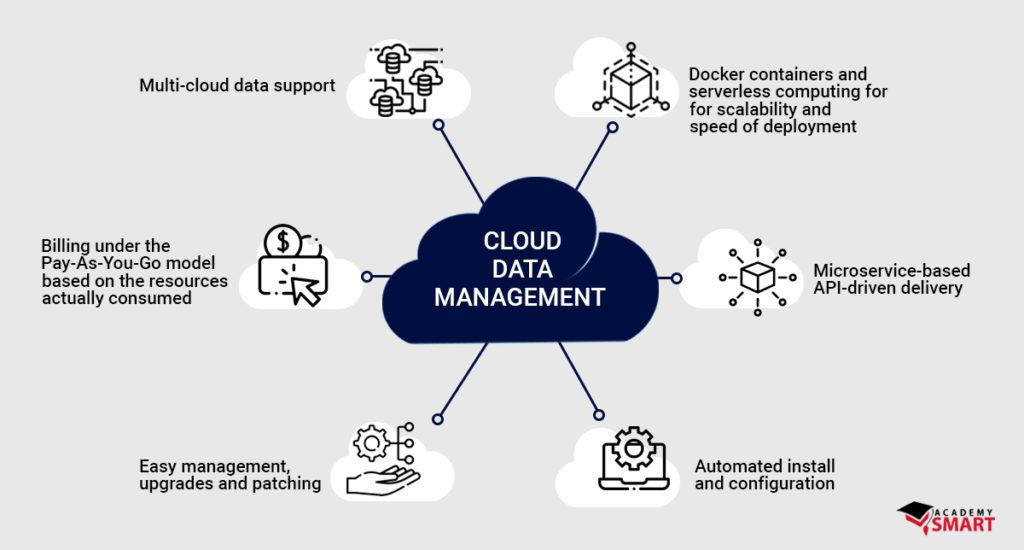Understanding Cloud-based Big Data Analytics Tools
Cloud-based big data analytics tools have become increasingly popular in recent years, as businesses seek to harness the power of data to make informed decisions, increase efficiency, and drive growth. These tools allow organizations to analyze large volumes of data in real-time, providing valuable insights that can be used to improve operations, identify new opportunities, and gain a competitive advantage.
At their core, cloud-based big data analytics tools are designed to help businesses make sense of the vast amounts of data generated by their operations, customers, and partners. By analyzing this data, organizations can gain a deeper understanding of their customers’ needs and preferences, identify trends and patterns, and make data-driven decisions that lead to better outcomes. In addition, cloud-based big data analytics tools can help businesses reduce costs, improve operational efficiency, and increase agility, making them an essential tool for any organization looking to stay competitive in today’s data-driven economy.
When it comes to choosing a cloud-based big data analytics tool, businesses have a wide range of options to choose from. Some of the most popular tools include Amazon S3, Google BigQuery, Microsoft Azure, and IBM Cloud, each of which offers a unique set of features, strengths, and weaknesses. By comparing and contrasting these tools, businesses can make an informed decision about which one is right for their needs, taking into account factors such as scalability, security, ease of use, and cost.
In the following sections, we will take a closer look at how to choose the right cloud-based big data analytics tool, compare and contrast the top tools on the market, and provide real-life examples of how businesses are using these tools to drive innovation and growth. We will also discuss best practices for implementing these tools, security considerations, future trends, and more, providing a comprehensive guide to cloud-based big data analytics tools for businesses of all sizes and industries.
How to Choose the Right Cloud-based Big Data Analytics Tool
Cloud-based big data analytics tools offer a wide range of benefits for businesses, including the ability to analyze large volumes of data in real-time, gain valuable insights, and make data-driven decisions. However, with so many options on the market, choosing the right tool can be a challenge. By considering the following factors, businesses can make an informed decision and choose a tool that meets their needs and delivers value.
Scalability
One of the most important factors to consider when choosing a cloud-based big data analytics tool is scalability. As businesses grow, their data needs will change, and their analytics tool should be able to grow with them. Look for a tool that can handle increasing volumes of data and provide the necessary processing power to analyze that data quickly and efficiently.
Security
Security is another critical factor to consider when choosing a cloud-based big data analytics tool. With the increasing amount of data being stored and processed in the cloud, ensuring the security and integrity of that data is essential. Look for a tool that offers robust security features, such as data encryption, access control, and compliance with industry standards and regulations.
Ease of Use
Ease of use is also an important consideration when choosing a cloud-based big data analytics tool. Look for a tool that is user-friendly and intuitive, with a low learning curve and minimal training required. This will help ensure that your team can hit the ground running and start analyzing data quickly and efficiently.
Cost
Cost is also a factor to consider when choosing a cloud-based big data analytics tool. While some tools may have a higher upfront cost, they may offer more features and capabilities, which can deliver long-term value. Consider the total cost of ownership, including ongoing maintenance and support, when evaluating different tools.
Evaluating Different Tools
When evaluating different cloud-based big data analytics tools, consider the following tips to make an informed decision:
- Define your requirements and objectives before you start evaluating tools.
- Create a shortlist of tools that meet your requirements and budget.
- Test drive each tool to evaluate its features, performance, and ease of use.
- Consider the level of support and training provided by the vendor.
- Check for any hidden costs, such as data transfer fees or additional storage costs.
- Evaluate the vendor’s reputation and track record in the industry.
By considering these factors and evaluating different tools, businesses can choose a cloud-based big data analytics tool that meets their needs, delivers value, and helps them make informed decisions, increase efficiency, and drive growth.

Top Cloud-based Big Data Analytics Tools: A Comparison
Cloud-based big data analytics tools have become increasingly popular in recent years, offering businesses the ability to analyze large volumes of data in real-time and gain valuable insights. With so many options on the market, it can be challenging to choose the right tool. In this section, we will compare and contrast some of the top cloud-based big data analytics tools, including their features, strengths, and weaknesses.
Amazon S3
Amazon S3 (Simple Storage Service) is a highly scalable and durable object storage service that allows businesses to store, retrieve, and manage large volumes of data in the cloud. With Amazon S3, businesses can use a variety of big data analytics tools, including Amazon Redshift, Amazon EMR, and Apache Hadoop, to analyze their data and gain insights.
Strengths:
- Highly scalable and durable storage
- Integrates with a variety of big data analytics tools
- Cost-effective storage options
Weaknesses:
- May require additional tools for data analysis
- Can be complex to set up and manage
Google BigQuery
Google BigQuery is a fully managed, serverless data warehouse that allows businesses to analyze large volumes of data in real-time. With Google BigQuery, businesses can use SQL to analyze their data and gain insights, with no need to manage infrastructure or scale resources.
Strengths:
- Fully managed and serverless
- Real-time data analysis with SQL
- Integrates with Google Cloud Platform services
Weaknesses:
- May have limitations with complex data transformations
- Can be expensive for high-volume data analysis
Microsoft Azure
Microsoft Azure is a cloud computing platform that offers a variety of big data analytics tools, including Azure Synapse Analytics, Azure Databricks, and Azure HDInsight. With Azure, businesses can analyze data using a variety of tools and languages, including SQL, Python, and R.
Strengths:
- Variety of big data analytics tools and languages
- Integrates with other Microsoft products and services
- Cost-effective storage options
Weaknesses:
- Can be complex to set up and manage
- May require additional tools for data transformation and preparation
IBM Cloud
IBM Cloud offers a variety of big data analytics tools, including IBM Cloud Pak for Data, IBM Cloud Functions, and IBM Watson Studio. With IBM Cloud, businesses can analyze data using a variety of tools and languages, including SQL, Python, and R.
Strengths:
- Variety of big data analytics tools and languages
- Integrates with other IBM products and services
- Strong focus on artificial intelligence and machine learning
Weaknesses:
- Can be complex to set up and manage
- May require additional tools for data transformation and preparation
When choosing a cloud-based big data analytics tool, businesses should consider their specific needs and requirements, including scalability, security, ease of use, and cost. By evaluating different tools and comparing their features, strengths, and weaknesses, businesses can make an informed decision and choose a tool that delivers value and helps them make data-driven decisions.

Real-life Applications of Cloud-based Big Data Analytics Tools
Cloud-based big data analytics tools have become increasingly popular in recent years, enabling businesses to analyze large volumes of data and gain valuable insights. These tools have been successfully implemented in various industries, driving innovation and growth. In this section, we will explore some real-life applications of cloud-based big data analytics tools, including case studies and success stories.
Healthcare
In the healthcare industry, cloud-based big data analytics tools are used to analyze patient data and improve patient outcomes. For example, a hospital in the United States used Google Cloud to analyze patient data and predict the likelihood of readmission. By using machine learning algorithms, the hospital was able to identify high-risk patients and provide targeted interventions, reducing readmissions by 15%. Similarly, a healthcare provider in Europe used Amazon S3 to store and analyze patient data, enabling doctors to make more informed decisions and improve patient outcomes.
Retail
In the retail industry, cloud-based big data analytics tools are used to analyze customer data and improve sales. For example, a retailer in the United States used Microsoft Azure to analyze customer data and personalize marketing campaigns. By using machine learning algorithms, the retailer was able to identify customer preferences and deliver targeted promotions, increasing sales by 10%. Similarly, a retailer in Europe used IBM Cloud to analyze customer data and optimize inventory, reducing stockouts by 20% and increasing sales by 15%.
Finance
In the finance industry, cloud-based big data analytics tools are used to analyze financial data and improve risk management. For example, a bank in the United States used Google Cloud to analyze financial data and detect fraud. By using machine learning algorithms, the bank was able to identify fraudulent transactions and prevent losses, reducing fraud by 50%. Similarly, a financial institution in Europe used Amazon S3 to store and analyze financial data, enabling risk managers to make more informed decisions and reduce risk exposure.
When implementing cloud-based big data analytics tools, businesses should follow best practices to ensure a successful implementation. This includes setting clear goals, involving stakeholders, and ensuring data quality. By following these best practices, businesses can leverage the power of cloud-based big data analytics tools to drive innovation and growth.

Best Practices for Implementing Cloud-based Big Data Analytics Tools
Implementing cloud-based big data analytics tools can be a complex process, but following best practices can help ensure a successful implementation. Here are some best practices to consider:
- Set clear goals: Before implementing a cloud-based big data analytics tool, it’s essential to set clear goals for what you hope to achieve. This will help you choose the right tool for your needs and ensure that you’re using it effectively.
- Involve stakeholders: Implementing a cloud-based big data analytics tool can impact various departments and stakeholders in your organization. It’s essential to involve them in the decision-making process and ensure that they understand how the tool will benefit them.
- Ensure data quality: Cloud-based big data analytics tools are only as good as the data they analyze. It’s essential to ensure that your data is clean, accurate, and relevant to your goals. This may involve investing in data cleaning and preparation tools and processes.
- Choose the right tool: There are many cloud-based big data analytics tools available, each with its own strengths and weaknesses. It’s essential to evaluate different tools based on your specific needs, including scalability, security, ease of use, and cost.
- Provide training: Cloud-based big data analytics tools can be complex and require specialized skills to use effectively. It’s essential to provide training and support to your team to ensure that they can use the tool effectively and make the most of its features.
- Monitor and optimize: Once you’ve implemented a cloud-based big data analytics tool, it’s essential to monitor its performance and optimize it regularly. This may involve adjusting settings, adding new features, or upgrading to a newer version.
By following these best practices, businesses can ensure a successful implementation of cloud-based big data analytics tools. These tools can help businesses make informed decisions, increase efficiency, and drive growth. However, it’s essential to approach implementation with a clear plan and a focus on data quality and training to ensure that the tools are used effectively.

Security Considerations for Cloud-based Big Data Analytics Tools
Cloud-based big data analytics tools offer numerous benefits for businesses, including scalability, cost-effectiveness, and ease of use. However, they also come with security considerations that businesses must address to ensure the privacy, access control, and compliance of their data. Here are some security considerations for cloud-based big data analytics tools:
- Data privacy: Cloud-based big data analytics tools involve storing and processing data in the cloud, which raises concerns about data privacy. Businesses must ensure that their data is encrypted in transit and at rest, and that they have control over who can access their data. They should also choose cloud providers that comply with data privacy regulations such as GDPR and HIPAA.
- Access control: Access control is another critical security consideration for cloud-based big data analytics tools. Businesses must ensure that only authorized users can access their data and that they have the appropriate level of access. They should implement role-based access control (RBAC) and multi-factor authentication (MFA) to prevent unauthorized access.
- Compliance: Cloud-based big data analytics tools must comply with various industry regulations and standards, such as PCI-DSS, SOC 2, and ISO 27001. Businesses must choose cloud providers that comply with these regulations and standards and provide regular security audits and reports.
- Data integrity: Data integrity is essential for cloud-based big data analytics tools. Businesses must ensure that their data is accurate, complete, and up-to-date. They should implement data validation and verification processes and use data lineage tools to track the origin and movement of their data.
- Incident response: Cloud-based big data analytics tools must have an incident response plan in place to address security incidents such as data breaches or cyber attacks. Businesses should choose cloud providers that provide incident response services and have a clear communication plan for reporting and addressing security incidents.
By addressing these security considerations, businesses can ensure the privacy, access control, and compliance of their data in cloud-based big data analytics tools. It’s essential to choose a cloud provider that prioritizes security and provides robust security features and services. Businesses should also implement their own security measures and best practices to ensure the protection of their data in the cloud.

Future Trends in Cloud-based Big Data Analytics Tools
Cloud-based big data analytics tools have revolutionized the way businesses analyze and make decisions based on data. As technology continues to evolve, we can expect to see several future trends in cloud-based big data analytics tools that will shape the future of data analysis and decision-making. Here are some of the top trends to watch:
- Artificial Intelligence (AI) and Machine Learning (ML): AI and ML are becoming increasingly important in cloud-based big data analytics tools. These technologies enable businesses to automate data analysis, identify patterns and insights, and make predictions based on data. In the future, we can expect to see more sophisticated AI and ML algorithms that can handle larger and more complex datasets, enabling businesses to make even more informed decisions.
- Real-time Analytics: Real-time analytics is becoming increasingly critical for businesses that need to make quick decisions based on data. Cloud-based big data analytics tools are enabling businesses to analyze data in real-time, providing insights and alerts that help businesses respond to changing market conditions and customer needs. In the future, we can expect to see more advanced real-time analytics tools that can handle even larger and more complex datasets.
- Data Governance and Management: As businesses generate and collect more data, data governance and management are becoming increasingly important. Cloud-based big data analytics tools are enabling businesses to manage and govern their data more effectively, ensuring data quality, accuracy, and compliance. In the future, we can expect to see more advanced data governance and management tools that can handle even larger and more complex datasets.
- Integration with IoT Devices: The Internet of Things (IoT) is generating vast amounts of data that can be used for big data analytics. Cloud-based big data analytics tools are enabling businesses to integrate data from IoT devices into their analytics platforms, providing insights and alerts that help businesses optimize their operations and improve customer experiences. In the future, we can expect to see more advanced integration tools that can handle even larger and more complex datasets from IoT devices.
- Hybrid and Multi-cloud Analytics: As businesses adopt multiple cloud platforms, there is a growing need for hybrid and multi-cloud analytics tools. These tools enable businesses to analyze data across multiple cloud platforms, providing a unified view of their data and enabling more informed decision-making. In the future, we can expect to see more advanced hybrid and multi-cloud analytics tools that can handle even larger and more complex datasets.
By staying informed about these future trends in cloud-based big data analytics tools, businesses can stay ahead of the curve and make the most of their data analysis and decision-making capabilities. It’s essential to choose cloud-based big data analytics tools that are flexible, scalable, and adaptable to these future trends, ensuring that businesses can continue to make informed decisions and drive growth in a rapidly changing world.

Conclusion: Making the Most of Cloud-based Big Data Analytics Tools
Cloud-based big data analytics tools have become essential for businesses seeking to make informed decisions, increase efficiency, and drive growth. By selecting the right tool, implementing it effectively, and ensuring its security, businesses can unlock the full potential of their data and gain a competitive edge. It’s crucial to stay informed about the latest trends and best practices in data analysis to make the most of these tools.
When choosing a cloud-based big data analytics tool, consider factors such as scalability, security, ease of use, and cost. Evaluate different tools based on these factors and select the one that best fits your business needs. Remember to involve stakeholders in the decision-making process and ensure data quality to ensure a successful implementation.
Security is another critical consideration when using cloud-based big data analytics tools. Ensure the privacy and integrity of your data by implementing access controls, encryption, and compliance measures. Stay up-to-date with the latest security best practices and trends to protect your data from cyber threats.
Finally, keep an eye on future trends in cloud-based big data analytics tools, such as artificial intelligence, machine learning, and real-time analytics. These trends have the potential to shape the future of data analysis and decision-making, providing businesses with even more powerful tools to unlock insights and drive growth. By staying informed and adopting these trends as they emerge, businesses can stay ahead of the curve and gain a competitive edge in their industry.
In conclusion, cloud-based big data analytics tools offer numerous benefits for businesses seeking to make informed decisions, increase efficiency, and drive growth. By following best practices for implementation, ensuring security, and staying informed about the latest trends and best practices, businesses can make the most of these tools and unlock the full potential of their data. So, start exploring the world of cloud-based big data analytics tools today and take your business to the next level.

